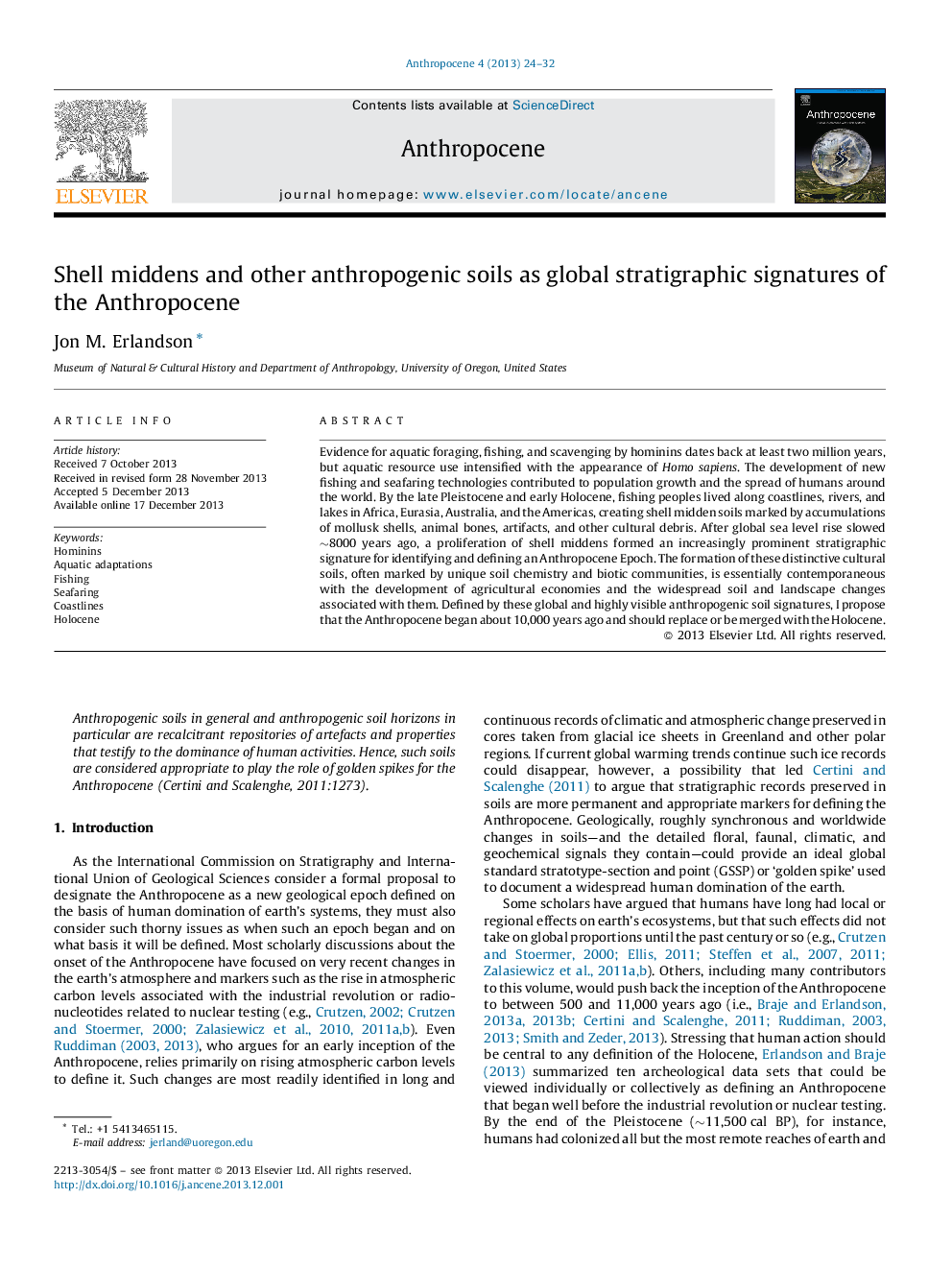| Article ID | Journal | Published Year | Pages | File Type |
|---|---|---|---|---|
| 4461944 | Anthropocene | 2013 | 9 Pages |
Evidence for aquatic foraging, fishing, and scavenging by hominins dates back at least two million years, but aquatic resource use intensified with the appearance of Homo sapiens. The development of new fishing and seafaring technologies contributed to population growth and the spread of humans around the world. By the late Pleistocene and early Holocene, fishing peoples lived along coastlines, rivers, and lakes in Africa, Eurasia, Australia, and the Americas, creating shell midden soils marked by accumulations of mollusk shells, animal bones, artifacts, and other cultural debris. After global sea level rise slowed ∼8000 years ago, a proliferation of shell middens formed an increasingly prominent stratigraphic signature for identifying and defining an Anthropocene Epoch. The formation of these distinctive cultural soils, often marked by unique soil chemistry and biotic communities, is essentially contemporaneous with the development of agricultural economies and the widespread soil and landscape changes associated with them. Defined by these global and highly visible anthropogenic soil signatures, I propose that the Anthropocene began about 10,000 years ago and should replace or be merged with the Holocene.
